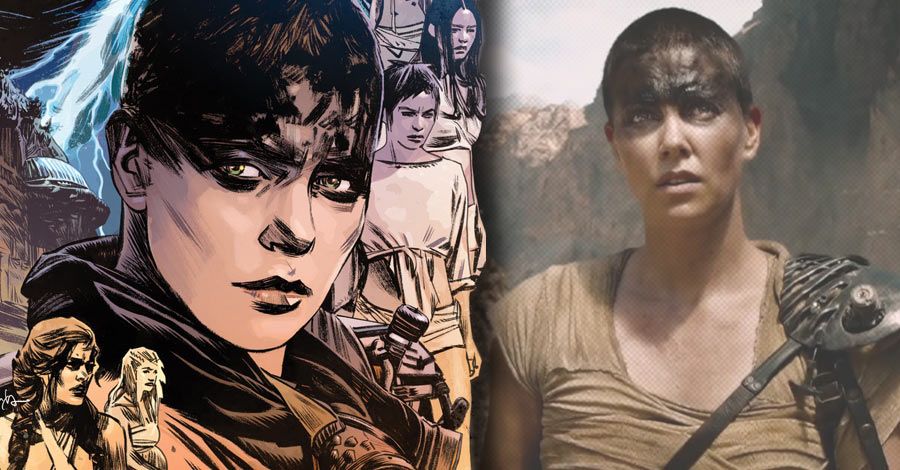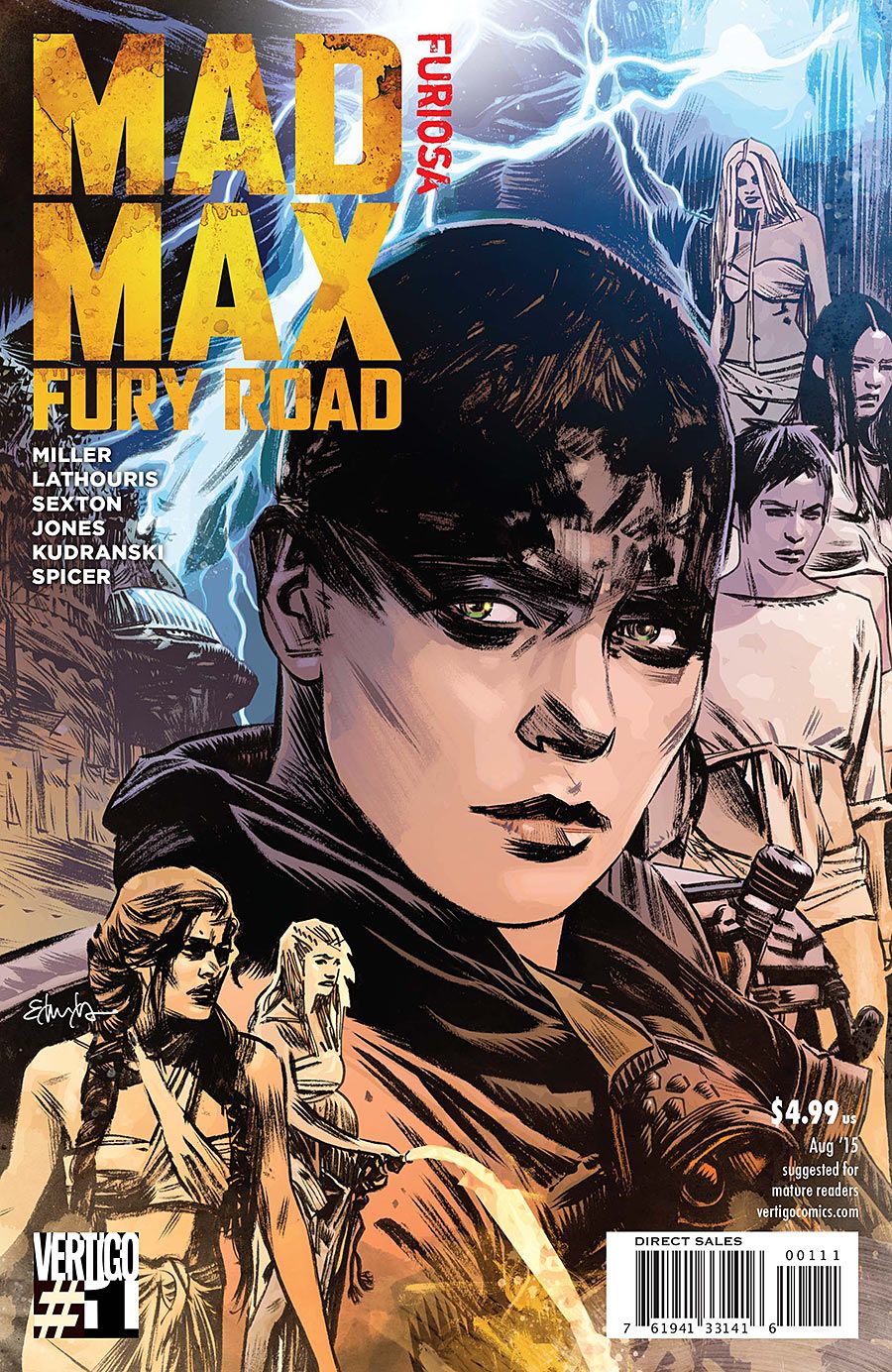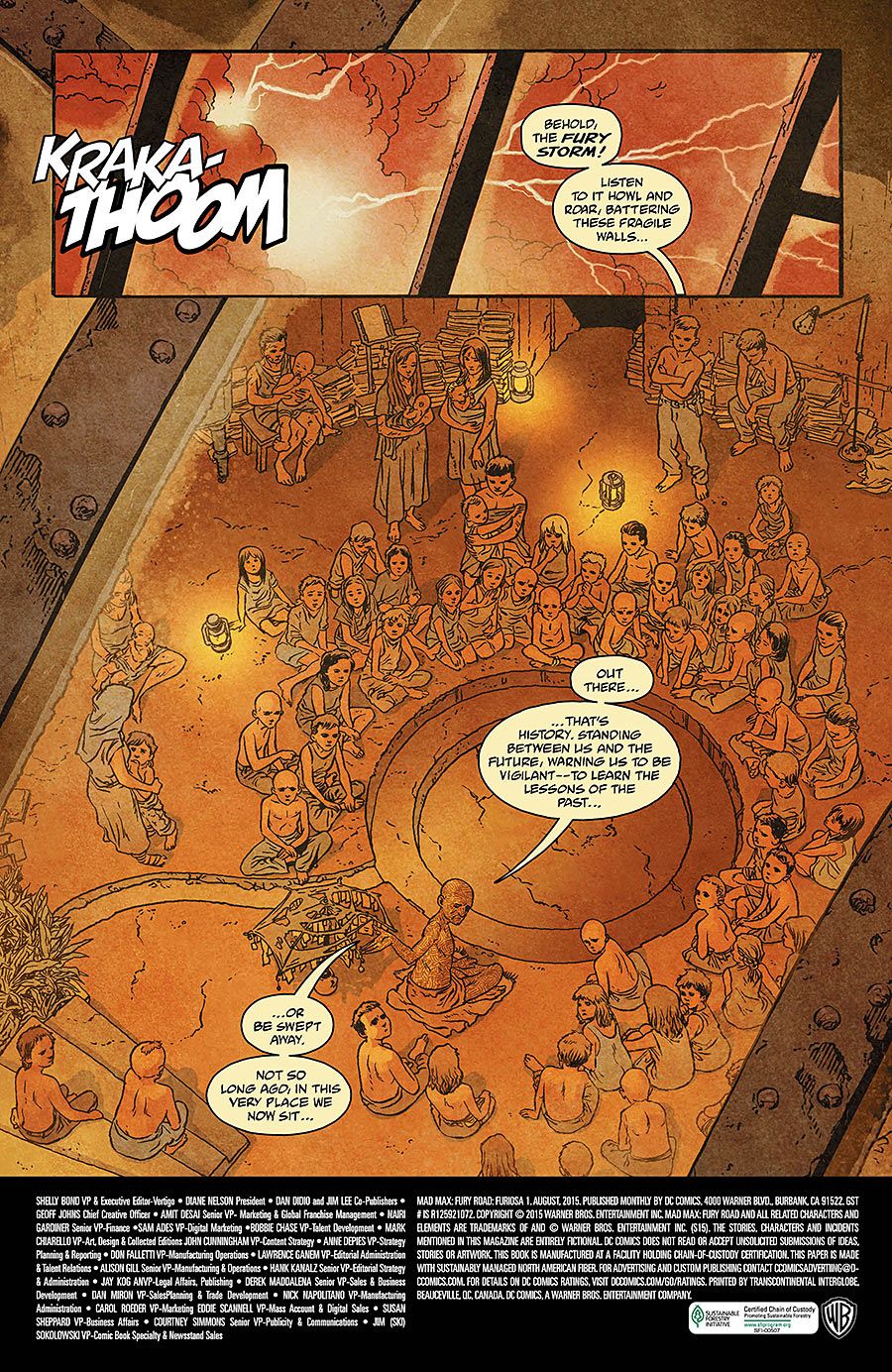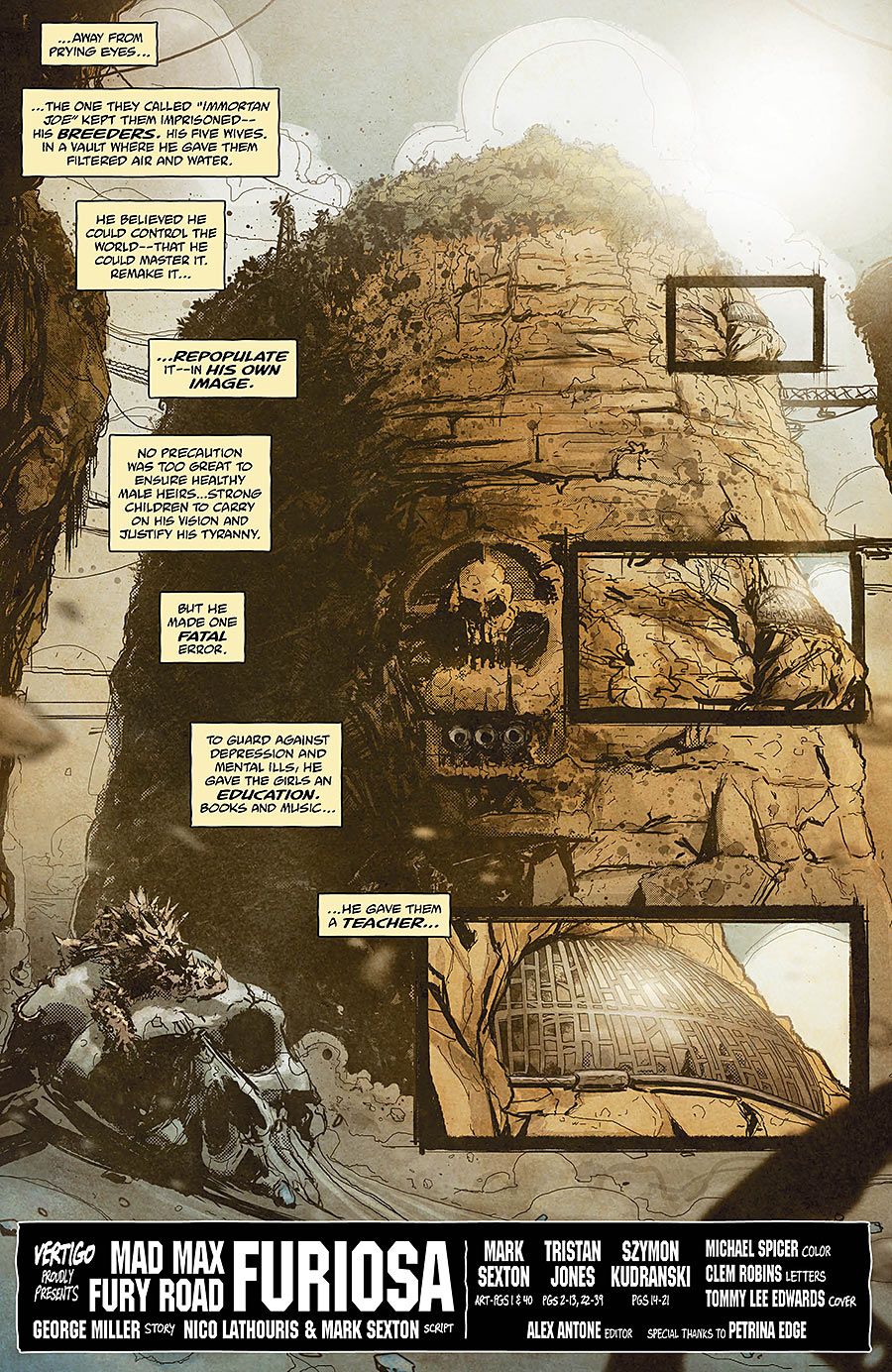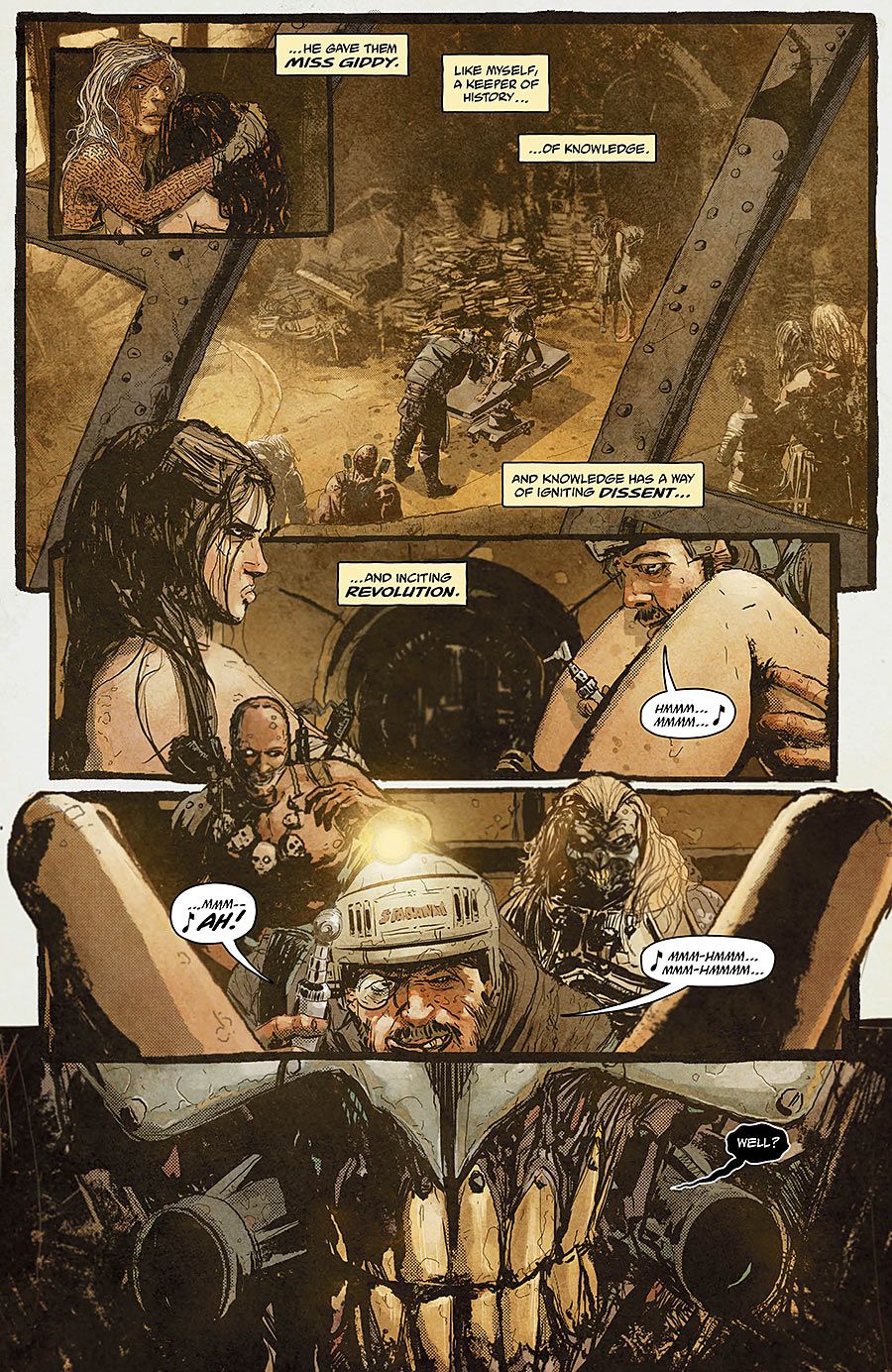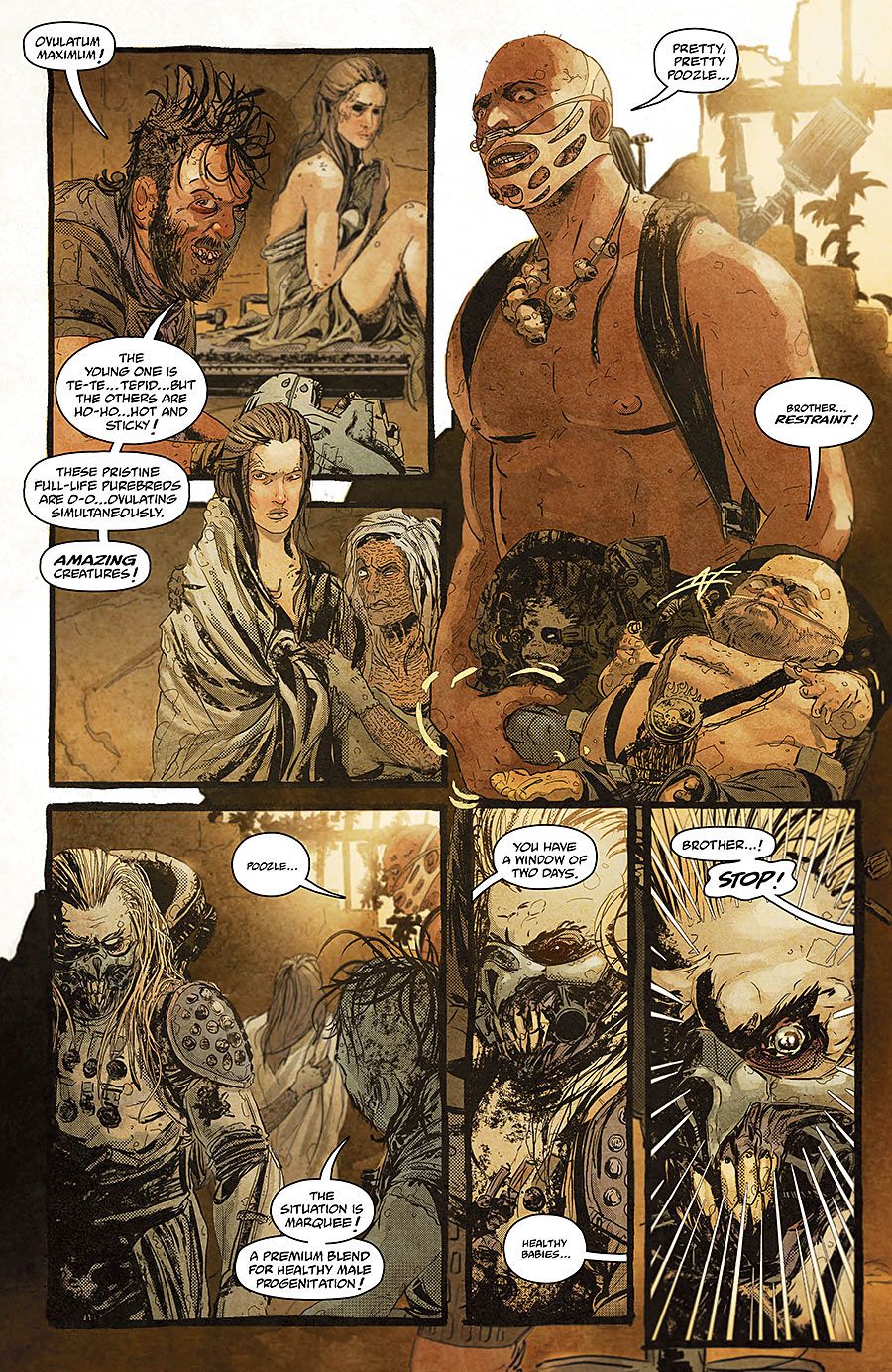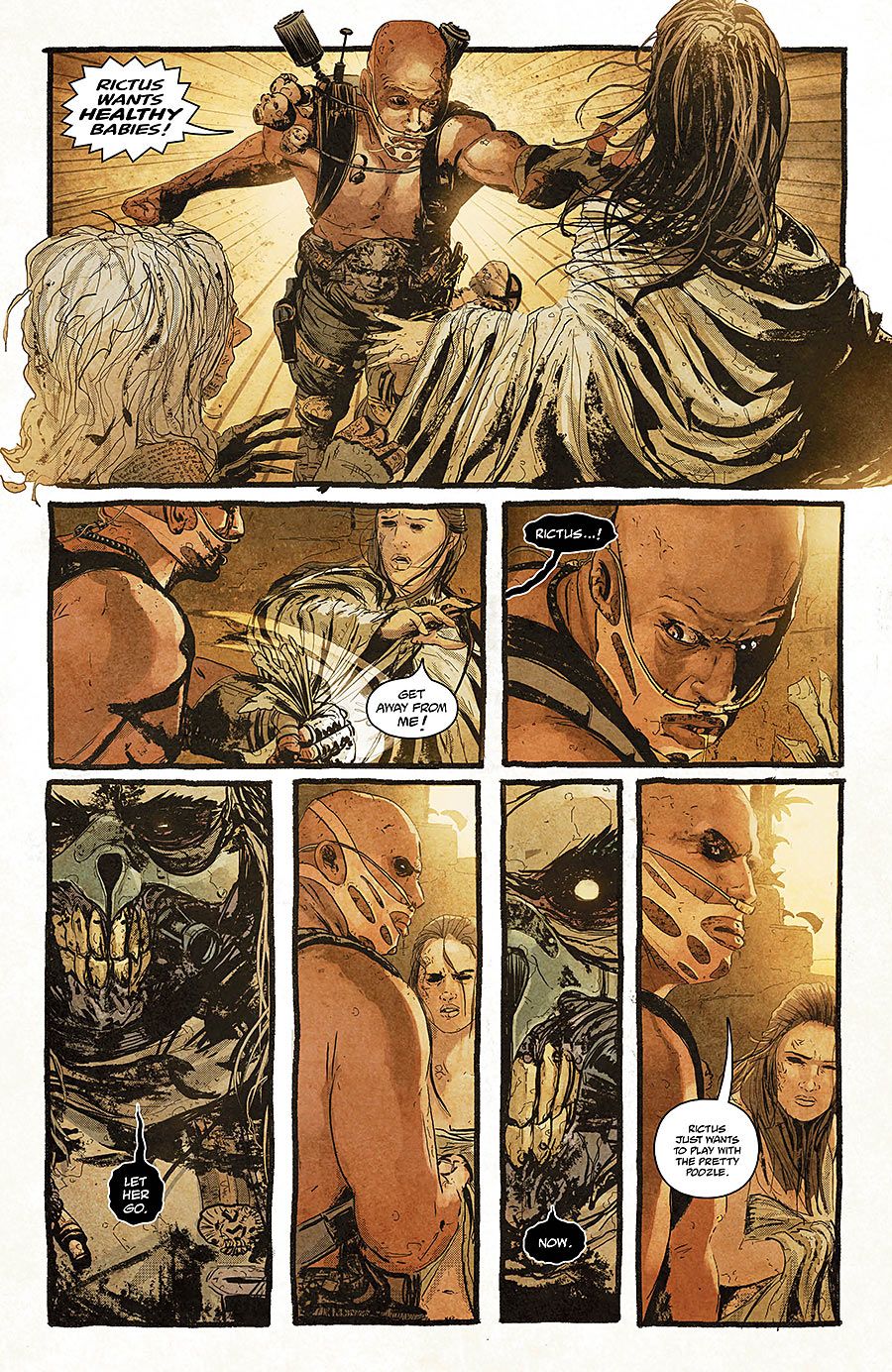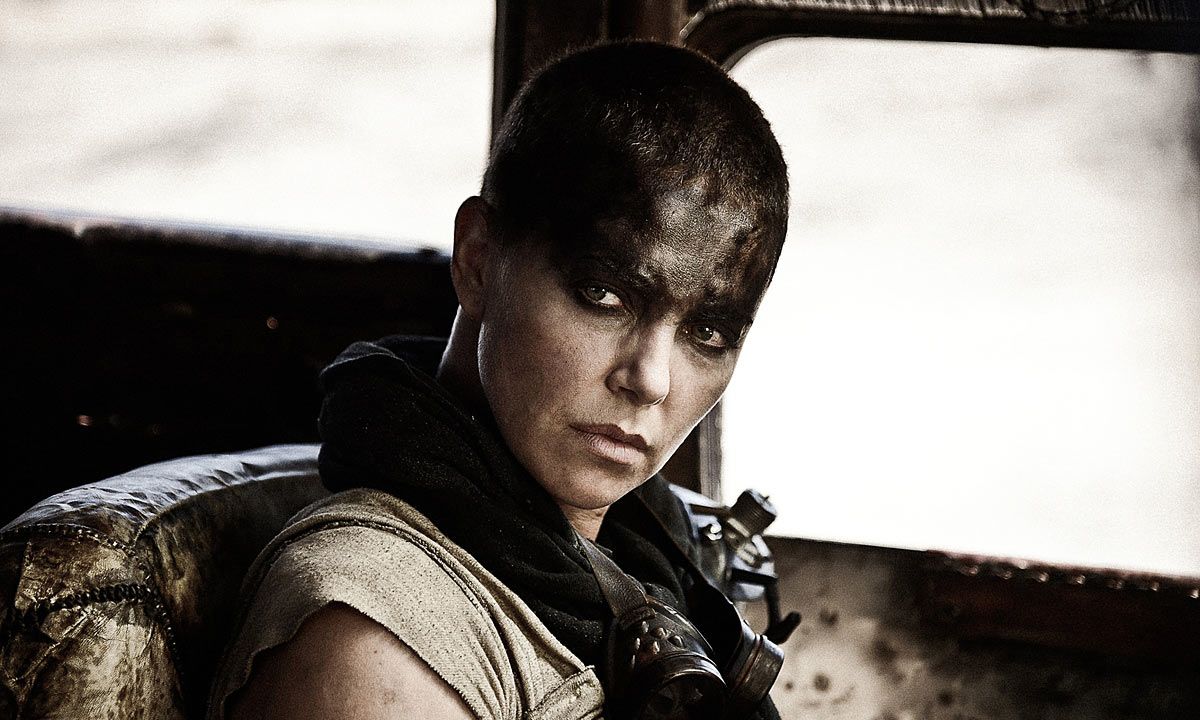The treacherous trip down Fury Road isn't over. Vertigo teamed up with filmmaker George Miller to continue the story of "Mad Max: Fury Road" -- well, to expand the story by exploring periods before the film began.
The series of one-shot comics delve into the pasts of key characters in the film. In the case of this week's "Mad Max: Fury Road -- Furiosa" #1 by writers George Miller, Nico Lathouris and Mark Sexton and drawn by Tristan Jones and Szymon Kudranski, the story travels slightly backward in time to explore how Imperator Furiosa (played in the film by Charlize Theron) encountered the Wives and ended up helping them.
"Mad Max: Fury Road" Prequel Comics to Arrive at Vertigo
"Furiosa is a fantastic character -- it's no surprise that fans have embraced her as enthusiastically as they have. Right from the very beginning of the development of 'Fury Road,' she was always the central character that drove the plot forward," Sexton, the film's lead storyboard artist, told CBR News about the powerful lead.
While Furiosa's history remains mysterious throughout the film, Lathouris, who served as co-writer of and Sexton explain that there are many stories left to tell about the character, offering insight on the development of Imperator Furiosa and translating the cinematic world of "Mad Max" to sequential art.
CBR News: Fans have responded to Imperator Furiosa with incredible positivity. How will this comic expand her role? Is there a chance we could see more "Furiosa" comics in the future?
Nico Lathouris: I hope we do see more Furiosa comics in the future. The Furiosa story we have committed to the graphic novel tells one small part of her story which links directly to "Fury Road." It is the story of events that led to her deciding to help the Wives escape from the tyrant Immortan Joe. There are many other stories that could be told about Furiosa.
We know that she came from the Green Place and we know that the Green Place is a long way from the Citadel -- several days and nights and much longer if access through the canyon is unavailable, which it wasn't. This begs the question: How did Furiosa get to the Citadel? There's a story.
Seeing the women inside the Immortan's Bio-Dome, you could ask the following question: Why isn't Furiosa one of the wives? There's another story. Then another question might be how did Furiosa become a warrior and an Imperator? Even within those few questions given Furiosa's expectation that the Green Place will still be intact, but isn't, one can assume she hasn't been there for a very long time. She probably left as a child. So within these broader questions and parameters there are many more stories we could tell about Furiosa.
Mark Sexton: The tale we're telling is of a key moment in her life -- the time when she's offered up the chance to redeem herself for the terrible choices she's made in her past. It's a fascinating insight into how this tough, scarred and brutalized woman comes into contact with the Wives and somehow becomes sympathetic to their cause. In a lot of ways, this tale is the true prologue to the events of Fury Road.
Nico, I read the stories in the comics were developed during production. When did Furiosa's history start to take shape?
Lathouris: This is a question for [director] George Miller, but I ask you to remember that "Fury Road" was written 15 or so years ago. At the time I joined it 13 years ago as a script and story analyst, the bare bones of Furiosa's story were obvious from the script and storyboards. As work continued and we began to build the world in ever-increasing detail, time to reflect led to questions about her past. We already had some reference for Max but not Furiosa. Over the years we created that history in detail and wrote a screenplay that tells her story.
Once the girls were cast and the actresses needed information, their worlds began to take shape out of need. And always the question: How did the Wives manage to convince Furiosa, a proud warrior and high-ranking Imperator in the Immortan's army to help them escape? Dramaturgically, I believed that the best way to develop characters and their motivation was to answer that question, construct and improvise that story. We did not get the chance to do that but it certainly made us think more deeply about it.
Also it contextualized the conflicting values within a world of War Boys and male tyranny in which women are basically commodities, more specifically sex slaves or milkers. That perspective gives rise to a profound interest in Furiosa, a woman among men, in a machismo world of aggression and violence. How did she get there?
"Fury Road" is a powerfully visual story. How did you ensure the comics have the same scope?
Sexton: The funny thing about the comics as opposed to the film is that we get opportunities to tell different types of story -- ones you would not ordinarily see on the screen as a "Mad Max" film. The Nux story is a small tale of personal tragedy and innocence set against the harsh world created by Immortan Joe. The Immortan Joe [comic] was an expository tale, a retelling of one man's history to explain how he became the tyrant we see in Fury Road. The tale of Max Rockatansky is a classic "Mad Max" tale of gladiatorial combat and vehicular mayhem, and also links "Fury Road" into the classic trilogy. And the Furiosa story is different again, an intimate tale set almost entirely within one room. But it gives us a wonderful chance to see more of what Immortan Joe had created in order to guarantee the future of his rule -- and perhaps give more of an understanding as to why the Wives wanted to escape so badly.
We did have the advantage that each of these stories had their genesis in the backstories that George concocted during the pre-production process. Some of them are still very much his original idea, while others have evolved. Also, Nico and I having worked on "Fury Road" for many years has given us both a strong feel for the material -- we're very familiar with its basic DNA, if you like, its visual storytelling and manic energy.
Each of the stories has given us the scope to expand the world of "Mad Max" in new and exciting directions, while also challenging us to stay as authentic as possible to that which had already been established in the film. It is very easy with a world, such as that of "Mad Max," to allow imagination to take you off into wild flights of fantasy. The most common debate we had while writing these scripts was, "Does that seem believable? Does it seem possible?" If the answer was yes, then we'd run with it. Things had to feel like they could be real and could actually happen. That was tough to do, but rewarding.
Lathouris: Yes it is, but the beauty of comics and the visual arts is that what is a bizarre apocalyptic world has even greater potential for being extended by the artists whose imaginations are not restricted by the pragmatics of the physical world and physical realities. It opens the doors to the imagination. The trick is to negotiate the expectation of comics and imagination with the rules of the world of "Mad Max," so that it does not become so ludicrous that it destroys authenticity and our curiosity about how the world came to be. Because, more and more as human populations grow and technology takes us into deeper water, uncertainty makes us ask that question.
How did you get teamed up with Tristan Jones and Szymon Kudranski, and what did they bring to the project?
Sexton: I've known Tristan for a few years -- he lives down in Melbourne, I'm up in Sydney, and we've crossed paths several times. I've been watching his artwork develop beautifully over the last couple of years and when the time came to find artists to help out on some of the stories, he immediately came to mind. His style is very filmic in its storytelling and compositions, and it's got this wonderful dirty, grungy look to it. George saw his sample art and thought he'd be perfect for the Furiosa story. Szymon came in later down the track, on the recommendation of our editor, Alex Antone, to help out with a run of pages. His stuff was a nice fit to Tristan's work, a little cleaner but it looked great, and he was also insanely fast! He did a terrific job, coming in as late in the project as he did, and he had to pick up a lot of subtleties and detail in the story which he did with aplomb and a great deal of enthusiasm. We were extremely lucky to have had both Tristan and Szymon on the book!
Nico, I believe the "Mad Max" comics are your first foray into the medium. What kind of adjustments did you have to make for writing for panels versus the screen?
Lathouris: With the help of our storyboard artist, Mark Sexton, who is also a comics artist, the task of working with panels as distinct to screen has been made easy. If anything for me has been the difference, it has been the speed with which the process moves forward and the amount of space in terms of pages we have had to tell a story being relatively limited.
I suspect that movement on screen helps a story along whereas a reader of comics has to provide her or his own movement to read and turn the pages. A cinema audience is more passive than a comics reader. In a 30-page story we have tried to tell 30 mini-stories so that each page is a story in itself, or at least a chapter in the story with a question in the final panels that invites the reader to continue reading. We were very conscious of that.
Mark, you created the art at the beginning and end of the comic with a keeper of history relating tales about the past. Was it a challenge to show the passage of time and the progression of society in those few pages?
Sexton: The History Man was actually a character that appeared in early drafts of the film when we were storyboarding it. This older man, desperate to remember the facts and figures of the past, the old learning -- so desperate that in a world where paper barely exists any more, he's tattooed all these facts onto his body -- that's a great character and a great visual. Of course, I had to try and make him look as real as anything else in the film, so I based him on Nico!
As to the challenge of showing time has passed since the events of Fury Road -- yes, that was tricky. We didn't want to go too far into the future -- and we also didn't want to give away too much of the events of the movie and spoil it for any reader who hadn't seen it yet! I tried hard to make it recognizable to anyone who'd seen the film -- the location where the stories are told relate exactly to the Furiosa tale, for instance. If you've seen the film, you'll probably understand the significance of where they all are, and understand that there's been a progression in society. It's even more apparent in the third issue, when you see how the outside world at the base of the Citadel has evolved. But always, the History Man is sounding a note of caution, a warning about the cyclical nature of history and that will pay off nicely in the fourth book, foreshadowing possible future events.
And since you were the lead storyboard artist on "Fury Road," can you offer any insight on the creation of Furiosa's look?
Sexton: Furiosa certainly evolved a fair bit over the course of production. Way back when we first began boarding, she was already equipped with a prosthetic arm -- that's something that remained constant. Back then she had hair, even dreadlocks for a time! And at one stage she even sported a facial tattoo of a toothed mouth that covered her own nose and mouth -- the mark of an Imperator. George was attracted to the idea of a beautiful woman with a massive facial tattoo, swallowing her beauty up with this brutal image.
We also worked on the basis back then that the prosthetic arm would be real and there would be no CG involved, so we always drew her with the arm hidden inside a sleeve with just the clawed hand poking out. I'm sure we hadn't thought of anything more effective than the actor holding a fake hand over the top of their own. Thank god that never eventuated!
Furiosa always needed to be distinctive, and we always saw her as an equal to Max -- so in a lot of ways her look mirrored Max's own -- except that the clothes and gear she carried were born more of the post-apocalyptic world, with that modern primitive/tribal aesthetic that came with it. This was different to Max in that his uniform still hearkens back to the world before the Fall -- squint, and you'll still see the bare bones of his police uniform underneath the filth and grime of the Wasteland.
Once production finally kicked in and Charlize Theron was cast, Furiosa's look evolved quite markedly, both from a creative point of view and from a practical point of view. Technology allowed the prosthetic arm to be exposed for all to see, and the black leather look that we'd always drawn her in because stripped back and more basic. I'm really happy that's how it worked out in the end, because that evolution really helped cement Furiosa as part of the world of "Fury Road." And Charlize did an amazing job of bringing the character to life. Let's hope we see her get the chance to do it again one day!
"Mad Max: Fury Road -- Furiosa" #1 is on sale now from DC/Vertigo Comics.

